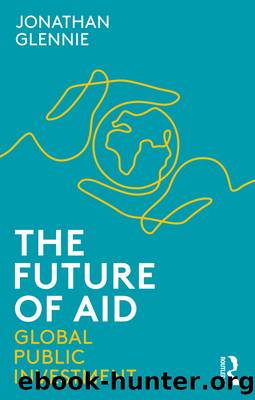The Future of Aid by Jonathan Glennie

Author:Jonathan Glennie [Glennie, Jonathan]
Language: eng
Format: epub
Tags: Business & Economics, Globalization, Education, Philosophy; Theory & Social Aspects, Political Science, International Relations, Arms Control, Social Science, Developing & Emerging Countries
ISBN: 9781000261264
Google: P1YFEAAAQBAJ
Publisher: Routledge
Published: 2020-11-29T03:52:31+00:00
Small but crucial
Private actors are increasingly entering and changing the game in development finance, bringing money and new ways of working. International private capital flows have also become more sophisticated and diversified and offer a rich range of financial products and services. The countries of the world now live in a ânew age of choiceâ as far as development financing options are concerned.23 However, while there are growing pockets of socially and environmentally conscious investors, most private capital has to be cajoled quite hard into serving sustainable development better. Global Public Investment can play a crucial role in bringing private funds forward to invest in public-interest projects, and it can help catalyse, leverage, mobilise and direct private finance through matching funds, guarantees, insurance, advance purchase agreements, interest rate subsidies on loans and capital contributions to multilateral development institutions. But private cannot replace public. The role of concessional IPF will remain crucial not just because it is available when other types of finance are not (filling gaps) but because of its inherent characteristics, furthering mutually agreed international goals, flexible and available counter-cyclically and in parts of the world where there is little profit to be made, bringing with it principles of social and environmental integrity and the expertise of public servants (overcoming traps). As with the other paradigm shifts, it is not either-or but both-and.
The gap-filling function of Global Public Investment will remain important, far more so than many currently think, given that traditional analyses are quite stingy in what they consider countries to âneedâ. And quantity will still matter â some of the challenges faced by the world will require very significant investments. But as other sources of development finance become gradually more available to all countries except the most malfunctioning, the trend to focus on the quality of the financing will continue in the new era, and the development characteristics of Global Public Investment, rather than just its availability, will be all-important. While this will be a new concept in some circles, it has been the reality for many years, especially when recipient countries have relatively higher per capita incomes. It is also one of the main concepts behind the recent rise of South-South Cooperation, which emphasises not the recipient country's absolute lack of funds, but the possibility that it might benefit from shared expertise and technology, with the finance coming in to support that exchange.
There is near-consensus that this is the moment to take international efforts to promote global development to a new level. But while the challenges the world faces are mostly recognised, including in the SDG agenda - our roadmap to a fairer and more sustainable world - the resources required are not being mobilised. We have the shopping list, but no-one seems to have remembered their wallet? In fact, concessional IPF is being deprioritised. Why? Despite its demonstrable value and the obvious need, the assumption persists that it should be steadily reduced as countries pass that famous income threshold. Economists in high places argue that
Download
This site does not store any files on its server. We only index and link to content provided by other sites. Please contact the content providers to delete copyright contents if any and email us, we'll remove relevant links or contents immediately.
| Accounting | Economics |
| Exports & Imports | Foreign Exchange |
| Global Marketing | Globalization |
| Islamic Banking & Finance |
The Meaning of the Library by unknow(2504)
Six Billion Shoppers by Porter Erisman(2267)
Why Nations Fail: The Origins of Power, Prosperity, and Poverty by Daron Acemoglu & James Robinson(2235)
No Time to Say Goodbye(2057)
Red Notice by Bill Browder(2025)
The Economist [T6, 22 Thg9 2017] by The Economist(1890)
Currency Trading For Dummies by Brian Dolan(1878)
Thank You for Being Late by Thomas L. Friedman(1739)
Bitcoin: The Ultimate Guide to the World of Bitcoin, Bitcoin Mining, Bitcoin Investing, Blockchain Technology, Cryptocurrency (2nd Edition) by Ikuya Takashima(1664)
Amazon FBA: Amazon FBA Blackbook: Everything You Need To Know to Start Your Amazon Business Empire (Amazon Empire, FBA Mastery) by John Fisher(1540)
Coffee: From Bean to Barista by Robert W. Thurston(1487)
The Future Is Asian by Parag Khanna(1436)
The Great Economists by Linda Yueh(1432)
How Money Got Free: Bitcoin and the Fight for the Future of Finance by Brian Patrick Eha(1385)
Pocket World in Figures 2018 by The Economist(1385)
Grave New World by Stephen D. King(1383)
Capitalism Without Capital: The Rise of the Intangible Economy by Jonathan Haskel(1373)
The Sex Business by Economist(1344)
Cultural Intelligence by David C. Thomas(1263)
